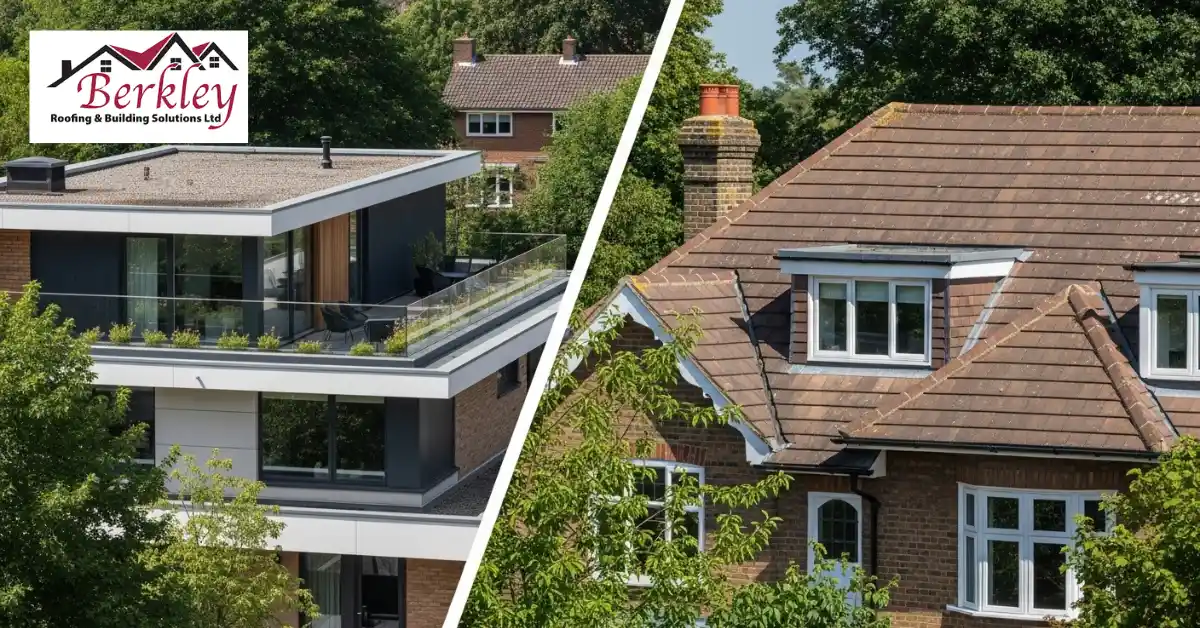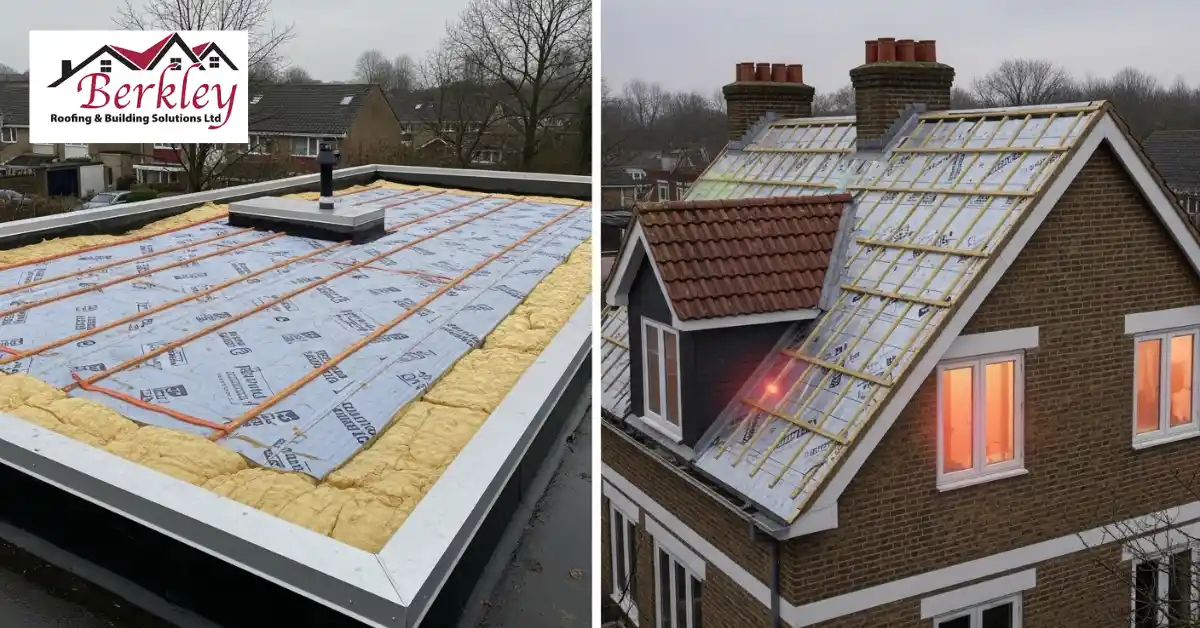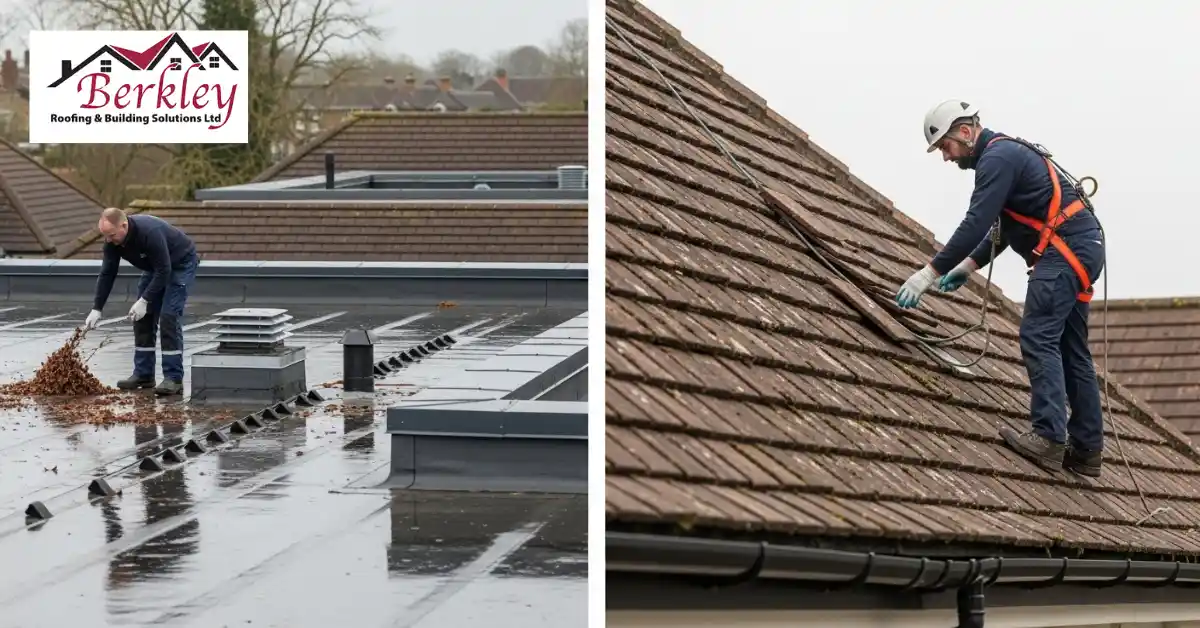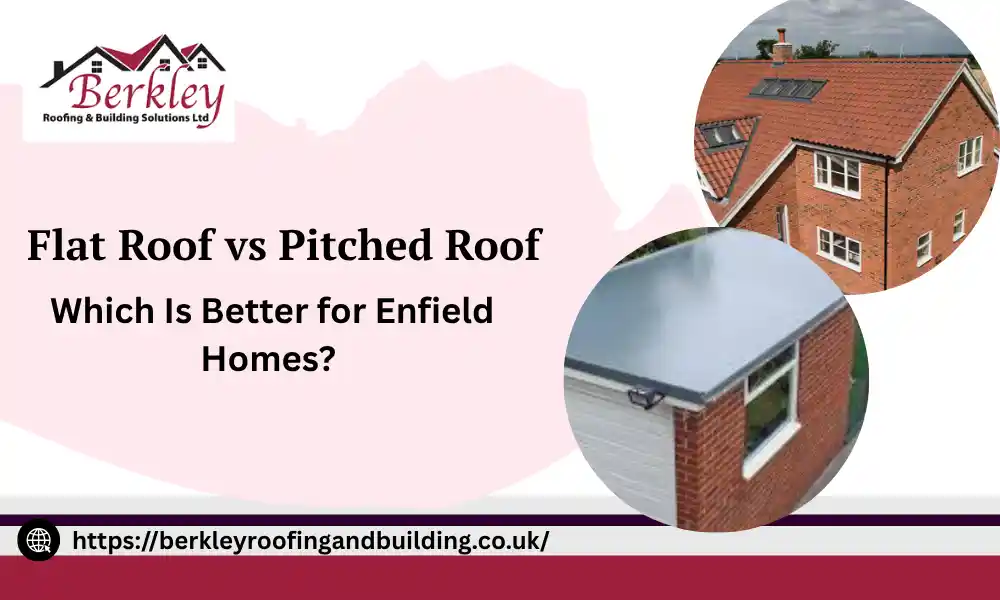Thinking about a new roof for your Enfield home? Choosing between a flat roof vs pitched roof can be confusing. Each has its benefits, and the right choice depends on your home’s design, budget, and how you plan to use the space.
A flat roof offers a modern look and extra usable space, while a pitched roof gives traditional charm and long-lasting protection. In this guide, we’ll compare flat vs pitched roofs, look at costs, maintenance, and energy efficiency, so you can decide which option suits your Enfield home best.
What Is a Flat Roof?
A flat roof is mostly level with a slight slope for drainage. It is common in modern Enfield homes, extensions, and garages.
Materials include felt, EPDM, fibreglass, and PVC. Flat roofs are durable, easy to maintain, and can be used for rooftop gardens or solar panels.
What Is a Pitched Roof?
A pitched roof has two or more slopes meeting at a ridge. It is common in most homes in Enfield and helps rain and snow slide off, reducing leaks.
Materials used include clay or concrete tiles, slate, and metal sheets. A pitched roof adds a classic look and long-lasting protection.
Flat Roof vs Pitched Roof: Main Differences

When choosing between a flat and a pitched roof, both have clear advantages. The best option depends on your home’s design, budget, and how you plan to use the space.
1. Appearance and Design
- Flat roof: Offers a modern, minimalist look. It works well for contemporary homes or extensions, giving a sleek finish.
- Pitched roof: Suits traditional designs. Its height and angles add character and curb appeal.
2. Space and Usage
- Flat roof: The top area can become a terrace, garden, or space for solar panels, making the roof itself usable.
- Pitched roof: Creates attic space that can be used for storage or converted into an extra room, adding practical value.
3. Weather Performance
- Pitched roof: Its slope lets rain and snow slide off easily, reducing leaks and water damage.
- Flat roof: Needs a good drainage system to prevent water pooling, which can cause issues over time.
4. Maintenance
- Flat roofing: Easier to inspect and repair since you can walk on it safely.
- Pitched roof: Harder to reach, and repairs are more complex and costly.
5. Longevity
- Pitched roof: Can last 50 years or more when built with tiles or slate.
- Flat roof: Usually lasts 20–30 years, depending on material quality and maintenance.
Roof Costs Compared: Flat vs Pitched
A flat roof is usually cheaper to install. It needs fewer materials and less labour. In Enfield, a small flat-roof extension can cost less than half as much as a pitched roof.
Flat roof cost factors:
- Material type (felt, EPDM, fibreglass)
- Roof size
- Drainage system
Pitched roof cost factors:
- Material (tiles or slate)
- Roof slope and design
- Labour and installation time
A pitched roof costs more upfront but lasts longer. Repairs and maintenance are lower over time. A flat roof is cheaper initially, but may require more maintenance to avoid water damage.
Energy Efficiency of Roofs

Energy efficiency depends on insulation. How well a roof retains or regulates heat can affect your home’s comfort and energy bills, especially in Enfield’s cold, wet winters.
- Flat roof: Retains heat well in winter when properly insulated. Small roof space helps reduce heat loss.
- Pitched roof: Extra air space can help regulate temperature, but may lose heat if the insulation is poor.
- Insulation: Both roof types can be insulated easily to improve energy efficiency.
Flat vs Pitched Roof Installation Time
Installation affects cost, planning, and long-term results.
- Flat roof: Quick to fit and simple to manage. Less labour is needed, and fewer materials make scheduling easier. Ideal for minimal disruption.
- Pitched roof: Takes more time and skill. Aligning rafters, tiles, and finishes adds complexity. Weather can delay work, and mistakes are costlier to fix.
- Key point: Choose a flat roof for faster installation. Pick a pitched roof if durability and style are your priority.
How Roofs Handle Enfield Weather
Enfield experiences rain, wind, and occasional snow. Roof choice affects how well your home withstands these conditions.
- Flat roof: Can perform well if built with proper drainage and modern waterproofing materials such as EPDM or fibreglass. Without good drainage, water pooling can cause damage.
- Pitched roof: Naturally sheds rain and snow due to its slope, reducing the risk of leaks and long-term maintenance issues.
- Key point: Both roof types can handle Enfield’s weather if designed and installed correctly, but pitched roofs generally require less ongoing care.
Roof Maintenance Tips

Taking care of your roof keeps it strong, prevents costly repairs, and extends its lifespan. Regular maintenance saves money and avoids big problems.
- Flat roof: Check that water drains properly after rain. Remove leaves, dirt, and debris regularly. Recoat or reseal every few years if needed.
- Pitched roof: Inspect tiles after storms for cracks or damage. Clean gutters and downpipes so water flows easily. Fix small leaks or broken tiles promptly.
For reliable inspections or repairs, turn to professional Roofers in Enfield who understand local roofs and weather conditions.
Conclusion
Choosing the right roof for your Enfield home depends on your needs and style. A flat roof gives a modern look, adds usable space, and is quicker to install. It’s great for extensions or contemporary homes, but it needs proper drainage and regular upkeep to last.
A pitched roof offers a classic look and strong weather protection. It costs more at first but lasts longer and needs less maintenance. Think about your budget, home design, and how you plan to use the space. To make the best choice, work with a skilled roofing company that can guide you through the options and help you decide what suits your home.
FAQs
1. How long does a flat roof last compared to a pitched roof?
A pitched roof can last 50 years or more when built with tiles or slate, making it a long-term investment. A flat roof generally lasts around 20 to 30 years, depending on the quality of materials and how well it is maintained.
2. Is a flat roof cheaper than a pitched roof?
Yes, a flat roof usually costs less to install because it requires fewer materials and less labour. However, a pitched roof may save money over time because it typically requires fewer repairs and lasts longer.
3. Which roof type handles heavy rain and snow better?
A pitched roof naturally allows rain and snow to slide off, reducing the risk of leaks. A flat roof can perform well in wet or snowy conditions, but requires effective drainage and good-quality waterproofing to prevent water damage.

